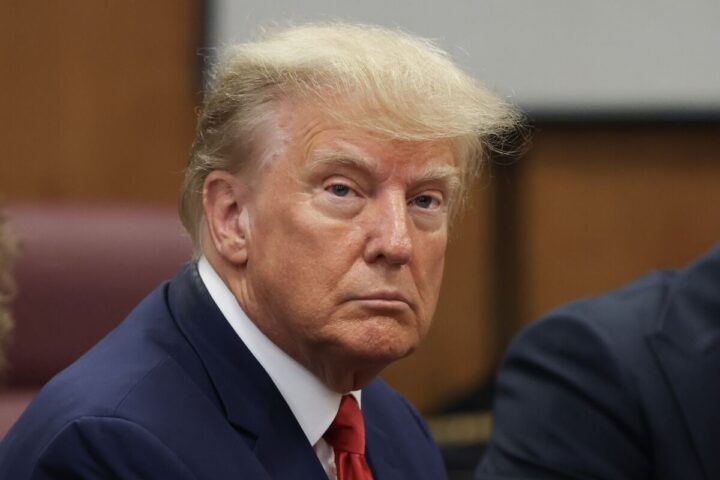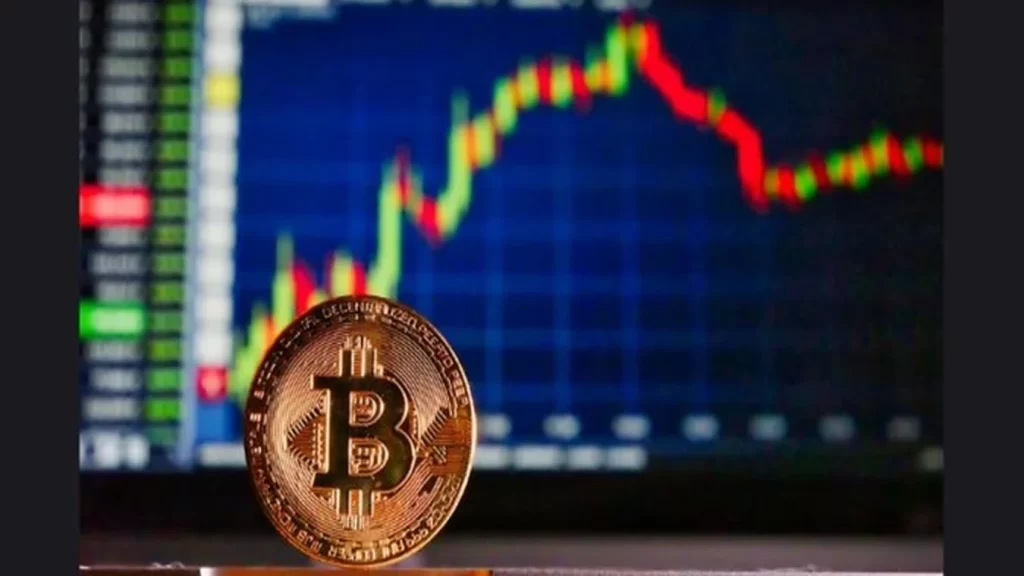Paul Sztorc, a prominent advocate for Bitcoin Drivechain technology, believes that the increasing mainstream acceptance of Bitcoin (BTC) will necessitate greater scalability and enhanced infrastructure functionality.
In an extensive interview with Cointelegraph, Sztorc discussed the pros and cons of the high-profile approval of Bitcoin exchange-traded funds (ETFs) in the United States and the long-term implications of institutional capital pouring into the Bitcoin ecosystem.
According to Sztorc, the emergence of Bitcoin ETFs is a sign of Bitcoin’s health and validation. It signifies that Bitcoin is becoming more widely recognized, and its name is gaining prominence.
Furthermore, it results from certain types of capital flow requirements that necessitate the use of ETFs. Sztorc, co-founder of LayerTwo Labs, considers Bitcoin ETFs as an “inevitable consequence of age.”
He highlights that customers of BTC-backed ETFs differ from everyday retail investors and dedicated Bitcoin enthusiasts.
These ETFs inherently involve custody and regulatory reporting, which aligns with the requirements of certain investors who are unlikely to self-custody Bitcoin.
However, Sztorc acknowledges that the hype surrounding Bitcoin ETFs could serve as an entry point for newcomers to the Bitcoin space.
Still, he cautions that excessive focus on ETFs might divert attention from Bitcoin’s underlying metrics and performance, with an unhealthy obsession with price being a potential downside.
LayerTwo Labs, over the past four years, has been diligently developing Drivechains, which are outlined in Bitcoin Improvement Proposals (BIPs) 300 and 301.
READ MORE: SEC Files Lawsuit Exposing $1.7 Billion Cryptocurrency Fraud Scheme
These BIPs describe how the Bitcoin network can interact with layer-2 blockchains or sidechains, allowing the creation, deletion, and transfer of BTC between them.
Sztorc, the author of BIP-300, champions the functionality that Drivechains can offer and has extensively discussed the intricacies of these proposals at various Bitcoin conferences.
As significant events like the approval of Bitcoin ETFs bring more liquidity into the Bitcoin ecosystem, Sztorc emphasizes that the network may encounter increased transaction volumes.
He cites Satoshi Nakamoto’s prediction that in two decades, there will either be substantial transaction volume or none at all.
Sztorc aligns with this view, stressing that Bitcoin will need to compete effectively to maintain its position.
While the Lightning Network has made strides in enabling low-fee, high-throughput transactions on the Bitcoin network, Sztorc argues that the ecosystem requires additional functionality to address challenges from competing altcoins, hard fork campaigns, and extension block campaigns.
BIP-300, according to Sztorc, introduces competition, fostering innovation among different software developers, and allowing users to participate in various sidechains while those who choose not to remain unaffected.
In summary, Bitcoin ETFs mark a significant milestone for Bitcoin’s mainstream adoption, but they also raise concerns about excessive focus on price.
Sztorc believes that the Bitcoin network’s scalability and functionality will be critical in handling increased transaction volumes resulting from growing adoption.
Drivechains, as proposed in BIPs 300 and 301, offer a solution to this challenge, promoting competition and flexibility in the Bitcoin ecosystem’s development.
In January, Bitcoin’s exchange outflows have been challenging bearish predictions for its price.
On-chain analytics firm Glassnode’s latest data reveals that despite a 20% dip in the BTC/USD price, Bitcoin continues to flow out of exchanges.
This indicates that investor appetite for Bitcoin remains strong, unaffected by the current price pressures.
One notable observation is that the outflows from the United States exchange Coinbase have consistently exceeded 10,000 BTC per day since the launch of the first U.S. spot Bitcoin exchange-traded funds (ETFs).
Although corresponding inflows have had an impact on exchange balances, there is a noticeable trend emerging in the second half of the month.
Outflows and inflows are beginning to balance out, suggesting a potential reduction in the extreme volatility seen immediately after the ETFs were launched on January 11.
Exchange balances had been steadily increasing throughout January but reversed direction on January 23.
Since then, the trading platforms monitored by Glassnode have seen a reduction of 7,400 BTC (equivalent to $321 million) in their balances.
READ MORE: Hong Kong’s Regulator Expedites Approval Process for Spot Bitcoin ETFs Following US SEC’s Approval
In addition to exchange outflows, ETF flows are also favoring Bitcoin bulls. Previously, the Grayscale Bitcoin Trust (GBTC) was sending around $700 million worth of BTC to Coinbase daily.
However, recent daily outflows from GBTC have decreased to less than $200 million. In terms of BTC, there were 24,000 BTC outflows on January 25, and just over 6,000 BTC outflows on January 29.
Analyzing GBTC flows with data from statistics resource CoinGlass, financial commentator Tedtalksmacro predicted a shift in the trend from net outflows to net inflows for spot ETFs.
He argued that as this shift occurs, it would be challenging to present a bearish narrative unless there is an unforeseen event.
Tedtalksmacro believes that the bearish sentiment surrounding GBTC outflows in recent weeks is exaggerated, pointing out that there is currently $26 billion worth of on-chain holdings in BTC ETFs, and this number is expected to continue rising as investors become more comfortable with this asset class worldwide.
Fidelity’s Bitcoin exchange-traded fund (ETF), known as FBTC, experienced a significant surge in daily inflows on January 29, attracting a total of $208 million.
This impressive figure marked a milestone as FBTC surpassed the daily outflows from Grayscale Bitcoin Trust (GBTC) for the first time since its launch.
According to data from Farside Investors, GBTC recorded outflows of $192 million on the same day, marking its lowest daily outflows since its re-launch.
This marked a notable shift in investor sentiment towards these two prominent Bitcoin investment vehicles.
The decline in GBTC outflows has been closely watched by crypto traders, who are eager to assess whether investors are cashing out of positions that had been in the red.
On January 25, JPMorgan analysts observed that GBTC outflows had previously exerted downward pressure on Bitcoin’s price but anticipated that this trend was likely to diminish in the near future.
On the same day, January 29, data revealed that nine newly launched U.S. spot Bitcoin ETFs collectively accumulated an impressive $994.1 million in trading volume.
This nearly doubled the trading volume of GBTC, which reached $570 million. Among these ETFs, BlackRock’s iShares Bitcoin Trust (IBIT) and Fidelity’s FBTC emerged as significant players, with daily volumes of $460.9 million and $315.4 million, respectively.
Together, they accounted for 78% of the total trading volume generated by the nine newly introduced ETFs.
READ MORE: SFC Issues Warning on Floki and TokenFi Staking Programs in Hong Kong
The competitive landscape in the spot Bitcoin ETF market has prompted issuers to reduce fees in order to attract investors both in the United States and globally.
Invesco and Galaxy Asset Management recently announced a fee reduction for their joint ETF, Invesco Galaxy Bitcoin ETF (BTCO), lowering the eventual expense ratio from 0.39% to 0.25%.
Notably, BTCO will have zero fees for the initial six months or until its assets reach $5 billion, at which point the reduced fee structure will take effect.
This fee war in the U.S. may have also influenced the European ETF market, where traders have reportedly been shifting their investments to American products.
Several European-based ETF providers, including Invesco and WisdomTree, have reduced their fees in response to this competitive environment.
CoinShares followed suit, further slashing fees on its flagship Bitcoin ETF, making the market more appealing to cost-conscious investors.
Overall, the surging interest in spot Bitcoin ETFs and the accompanying fee reductions demonstrate the dynamic nature of the cryptocurrency investment landscape, with investors seeking cost-effective and accessible avenues to gain exposure to Bitcoin.
On January 27, Bitcoin remained steady at approximately $42,000, instilling confidence in traders due to recent price gains towards the end of the week.
Market data from Cointelegraph Markets Pro and TradingView revealed the usual calm weekend price movements, with $41,800 as a focal point.
The preceding day had witnessed a 5% increase in Bitcoin’s value, marking an improvement in market conditions compared to previous weeks, as reported by Cointelegraph.
Several recurring factors continued to capture the attention of investors, including the outflows from exchange-traded funds (ETFs), selling pressure stemming from defunct exchanges like FTX and Mt. Gox, and the impending block subsidy halving.
In a recent YouTube update, Michaël van de Poppe, the founder and CEO of MN Trading, expressed his belief that the current correction in Bitcoin’s price had come to an end.
He anticipated that, leading up to the halving in April, Bitcoin would experience a climb to its long-term range highs, with the possibility of encountering liquidity in the mid to low-$30,000 range before this ascent. He speculated that there might be one more rally to reach $48,000 before a final correction.
READ MORE: Crypto Analyst Urges SEC to Rethink Licensing Requirements for Local Exchanges
Van de Poppe also posited that over time, the negative impacts of FTX, Mt. Gox, and GBTC maneuvers would diminish in significance.
He suggested that Bitcoin was likely to consolidate in the range of $37,000 to $48,000 in the coming months, during which Altcoins might gain momentum.
Furthermore, he projected that the ETF’s real impact on Bitcoin’s price would materialize in the next few years, potentially driving it to a range of $300,000 to $500,000.
However, not everyone shared the same optimism, as some analysts believed that Bitcoin could still face a potential return to $30,000 or even lower in the months ahead.
For shorter timeframes, Rekt Capital, a well-known trader and analyst, emphasized the significance of the upcoming weekly close.
He noted that Bitcoin had displayed a favorable response during the week, gradually positioning itself to reclaim the lost range.
He suggested that a weekly close above the critical level of approximately $41,300 could potentially salvage the range.
The Hong Kong Securities and Futures Commission (SFC) has recently received its inaugural application for a spot Bitcoin (BTC) exchange-traded fund (ETF), marking a significant development in the cryptocurrency investment landscape.
Harvest Hong Kong, one of the largest fund management firms in China, officially submitted its spot Bitcoin ETF application to the Hong Kong SFC on January 26, as reported by Tencent News.
It appears that the regulatory body is actively striving to expedite the approval process for ETFs within the nation, with the aim of launching the first Hong Kong spot Bitcoin ETF shortly after the Chinese New Year, scheduled for February 10.
In a notable parallel to the United States’ Securities and Exchange Commission (SEC), the Hong Kong regulatory authority is contemplating the approval of multiple spot ETFs to ensure a fair and competitive environment.
Although Harvest Fund is the pioneer in filing for a spot BTC ETF, it is anticipated that other financial institutions in the region will follow suit.
Several regional financial entities have already expressed their interest in introducing a spot BTC ETF in the year 2024.
As previously reported by Cointelegraph on January 19, a minimum of ten financial institutions in Hong Kong are actively engaged in the process of launching a spot BTC ETF.
READ MORE: US Regulators Issue Cautionary Crypto Warning: Beware of Overhyped AI Trading Bots
Distinguished players in the financial sector, such as Venture Smart Financial Holdings, have already set their sights on the first quarter of 2024 as their target launch date for the spot ETF.
Furthermore, several crypto-oriented firms that have previously launched futures-based crypto ETFs in Hong Kong are also expected to join the queue for spot Bitcoin ETF applications.
Notably, Samsung Asset Management, which introduced the Samsung Bitcoin Futures ETF in 2023, has expressed its willingness to explore the possibility of launching a spot ETF, demonstrating the growing appetite for cryptocurrency investment products in the region.
Hong Kong has gained prominence as a leading cryptocurrency hub in Asia, owing to its regulator’s crypto-friendly stance in 2023.
The SFC introduced crypto-specific regulations in 2023, granting both institutional and retail investors the opportunity to engage in cryptocurrency-related activities.
Even before the SEC in the United States greenlit the first spot BTC ETF, the Hong Kong SFC had paved the way for cryptocurrency-based ETFs and expressed its readiness to accept applications for the authorization of various funds, including digital asset spot ETFs and existing crypto futures ETFs.
This move has solidified Hong Kong’s position as a key player in the global crypto investment arena.
On January 29th, Google is poised to enact a pivotal policy update that will permit certain cryptocurrency products to be promoted across major search engines.
Among these products, Bitcoin exchange-traded funds (ETFs) are emerging as potential contenders that meet the stipulated criteria, igniting considerable excitement within the cryptocurrency industry.
This significant development traces its origins back to December 2023 when Cointelegraph first reported on Google’s impending revision of its cryptocurrency and related ads policy.
Effective January 29, this revision will enable advertisements from “advertisers offering Cryptocurrency Coin Trust targeting the United States.”
Coinciding with this policy shift is the recent approval of 11 spot Bitcoin ETFs by the United States Securities and Exchange Commission (SEC) on January 10.
Investors who choose to acquire shares in these spot Bitcoin ETFs effectively secure a stake in the ETF’s Bitcoin holdings.
Importantly, this aligns perfectly with Google’s updated requirements, which specify a focus on “financial products that allow investors to trade shares in trusts holding large pools of digital currency.”
Crypto analysts are buzzing with optimism regarding the potential influx of investments into Bitcoin ETFs, buoyed by Google’s formidable transaction processing capacity in managing search requests.
Recent data from DemandSage underscores the sheer magnitude of Google’s daily search volume, which stands at an astonishing 8.55 billion searches.
Nevertheless, it’s worth noting that Google’s policy update employs the somewhat nebulous term “cryptocurrency coin trusts” when referring to the permitted products, leaving some room for interpretation.
READ MORE: Crypto Analyst Urges SEC to Rethink Licensing Requirements for Local Exchanges
Meanwhile, a noteworthy development in the cryptocurrency landscape involves the Grayscale Bitcoin Trust (GBTC), one of the largest Bitcoin trusts.
Recently, it transitioned into a spot Bitcoin ETF, following approval from the SEC on January 10.
Previously, GBTC shares were exclusively available to accredited investors and were subject to a mandatory six-month holding period.
Accredited investors, under U.S. regulatory standards, are individuals with a net worth exceeding $1 million or an annual income surpassing $200,000 for the past two years.
These requirements are designed to shield less knowledgeable investors from potentially risky ventures that could lead to financial losses.
In contrast, spot Bitcoin ETFs are accessible to the general public in the United States and are regulated under the Securities Act of 1933.
This regulatory framework adds an extra layer of security, potentially making them a safer avenue for Google to explore in its advertising efforts.
The anticipation surrounding Google’s policy update has been building since August 2021, when prominent cryptocurrency trader Michael van de Poppe expressed optimism about the potential influence of Google ads on Bitcoin-related products.
This optimism has been further fueled by the SEC’s exploration and subsequent approval of Bitcoin Futures ETFs in October 2021, signaling a growing acceptance of cryptocurrency-related investment products in the mainstream financial landscape.
Tesla’s decision to divest its Bitcoin holdings has led to a missed opportunity of over $300 million in potential profits.
The electric vehicle company initially entered the world of cryptocurrency in February 2021 with a groundbreaking investment of $1.5 billion when Bitcoin’s price was approximately $36,000.
Since Tesla’s first reported Bitcoin balance on February 8, 2021, the company’s stock price has decreased by about 40% compared to Bitcoin’s performance.
Specifically, Tesla’s stock (TSLA) has underperformed Bitcoin (BTC) by 40.1%, while Bitcoin itself has appreciated by 7.39% against the US dollar, and Tesla’s stock has declined by 35.7% against the US dollar.
Tesla’s approach took an unexpected turn when the company sold roughly 10% of its Bitcoin holdings in March 2021 and around 75% in the second quarter of 2022.
Elon Musk, Tesla’s CEO, explained that these sales aimed to showcase Bitcoin’s liquidity and strengthen Tesla’s financial position during uncertain times.
Had Tesla retained its entire Bitcoin investment, it could have realized a hypothetical profit exceeding $300 million, given Bitcoin’s current value of around $41,500.
READ MORE: US Government Plans to Sell $118 Million Worth of Seized Silk Road Bitcoin
However, Tesla has maintained its remaining Bitcoin holdings, estimated at approximately 9,720 BTC, in recent quarters, signaling a more conservative strategy in anticipation of a bullish year for Bitcoin.
Interestingly, Tesla’s previous Bitcoin sales coincided with quarters where the company reported weaker free cash flows, which represent the cash generated after covering operational expenses.
For instance, in the first quarter of 2021, Tesla’s $272 million Bitcoin sale accounted for a staggering 93% of the company’s free cash flows during that period.
Similarly, in Q2 2022, the 73% reduction in free cash flows aligned with Tesla’s Bitcoin sales. It appears that Musk relied on Bitcoin to boost finances during Tesla’s financially constrained periods.
However, the situation may change, as Tesla’s free cash flows have been on the rise throughout 2023. In Q4 2023, Tesla’s free cash flow was a robust $2.1 billion, contributing to a total of $4.4 billion for the year.
Many analysts predict a potential increase in Bitcoin’s value in 2024, citing the approval of spot Bitcoin exchange-traded funds in the United States and the expected impact of the upcoming Bitcoin halving event as key factors driving their optimism.
Tesla’s decision regarding its remaining Bitcoin holdings may be influenced by its improving financial outlook and the evolving cryptocurrency landscape.
The approval of spot Bitcoin exchange-traded funds (ETFs) by the United States Securities and Exchange Commission (SEC) on January 10 has raised concerns about potential misconceptions regarding cryptocurrency regulations.
Rostin Behnam, the chair of the Commodity Futures Trading Commission (CFTC), highlighted these worries in a keynote speech on January 26.
Behnam emphasized the risk of investors, both retail and institutional, misinterpreting the recent SEC decision as comprehensive regulatory oversight for Bitcoin and other cryptocurrencies.
Although spot Bitcoin ETFs can now provide exposure to the cryptocurrency, they are supervised by SEC-regulated stock exchanges.
However, Behnam pointed out that there is still a lack of regulatory oversight for the broader cash market of digital assets, which includes cryptocurrency exchanges.
He stated, “There remains nothing firmly in place to address the opaque and inconsistent practices in the cash markets for digital assets.”
This absence of regulatory clarity in the cash market has implications for the transparency of Bitcoin ETFs, as asset management firms acquire the underlying assets from this market.
Behnam expressed concerns about trade settlement, conflicts of interest, data reporting, cybersecurity, customer protections, transparency, and overall market integrity.
READ MORE: Zaki, Financial Scammer and PayFuture Owner, Wants Your Money
Behnam also criticized the concept of Bitcoin ETFs, describing them as speculative and volatile assets wrapped in a thin layer of indirect regulation and presented as new investment products.
The issue of cryptocurrency regulation has been a prominent topic within the U.S. government, driven by the demands of the crypto industry.
In September 2023, CFTC Commissioner Caroline Pham proposed a limited pilot program to address crypto regulation, warning that the U.S. might need to catch up with crypto-friendly jurisdictions if regulatory clarity is not established.
She suggested that this program could resemble regulatory sandboxes previously implemented at the state level.
Many anticipate that there may be increased regulatory clarity following the U.S. presidential election in November.
A survey conducted on January 2 by the Crypto Council for Innovation revealed that a candidate’s stance on digital assets was considered important by most individuals in the crypto industry when deciding their vote, indicating the growing significance of cryptocurrency regulation in the political landscape.
Investor Chris Burniske has made a bold prediction regarding the future of Bitcoin, foreseeing months of struggle ahead for the cryptocurrency as it attempts to recover its lost ground and challenge previous highs.
In a recent post on X (formerly Twitter), Burniske, who currently serves as a partner at the crypto venture capital firm Placeholder, suggested that the price of BTC could potentially drop to a minimum of $30,000.
Burniske’s outlook aligns with a growing number of crypto industry figures who are also anticipating further declines in Bitcoin’s price.
However, Burniske’s floor target is notably lower than some of his peers, indicating a more bearish stance.
He emphasized that Bitcoin may experience a period of decline, possibly testing levels in the mid-to-high $20,000s before any significant recovery toward previous all-time highs.
He cautioned investors about the potential volatility in the path ahead, including possible fakeouts, and suggested that this extended downturn could take months to play out.
Burniske’s forecast extends beyond the upcoming block subsidy halving in April, indicating that the recovery may be a longer-term endeavor.
While Bitcoin is expected to face challenges, Burniske also anticipates a more challenging situation for altcoins, warning investors to exercise patience during this period of uncertainty.
READ MORE: Federal Court of Canada Rules Emergency Crypto Law Used Against Truckers Unconstitutional
He stressed that other cryptocurrencies may experience greater percentage declines compared to Bitcoin.
Despite his bearish outlook, Burniske made it clear that he was not inclined to change his long BTC position, expressing confidence in Bitcoin’s long-term potential.
This perspective on Bitcoin’s future aligns with the broader sentiment in the crypto industry, where several factors are influencing predictions of continued weakness in BTC’s price.
These factors include macroeconomic influences tied to U.S. financial policies and global liquidity trends, which have a significant impact on crypto markets.
Other industry figures, such as Arthur Hayes and notorious trader Il Capo of Crypto, have also made bearish predictions about Bitcoin’s price, with some suggesting the possibility of a dip to $30,000 or even $12,000.
However, some analysts, like Il Capo of Crypto, see a temporary reprieve for Bitcoin bulls and anticipate a potential rebound if key levels are reclaimed.
As of the time of writing, BTC/USD was trading near $40,000, but the future remains uncertain, with investors closely monitoring developments in the crypto market.
JPMorgan analysts have suggested that investors have likely completed most of their profit-taking from the Grayscale Bitcoin Trust (GBTC), potentially alleviating downward pressure on Bitcoin’s price.
This observation coincides with record high daily net outflows from United States spot Bitcoin exchange-traded funds (ETFs) on their ninth day of trading.
In a market report dated January 25, the analysts, led by Market Strategy Managing Director Nikolaos Panigirtzoglou, stated that “GBTC profit taking has largely happened already.”
This implies that much of the negative influence on Bitcoin stemming from this source has subsided.
Grayscale’s fund had been trading at a discount to its net asset value since early 2021.
The analysts attributed the $4.3 billion outflows from the fund since its conversion to an ETF on January 11 to “profit-taking on previous GBTC investments.”
This profit-taking is seen as one of the key reasons behind Bitcoin’s recent price drop of nearly 20%, causing it to trade below $40,000 following the launch of multiple U.S. Bitcoin ETFs.
JPMorgan’s assessment follows a significant event where the ten approved spot Bitcoin ETFs experienced a net outflow of $158 million on January 24.
READ MORE: Polygon Labs Unveils AggLayer: Transforming the Blockchain Landscape into a Unified Network
This marked the largest net outflow since their launch, as per BitMEX research data shared on social media platform X on January 25.
Grayscale’s ETF witnessed $429 million in outflows on January 24, while the most recent data from BitMEX for January 25 indicated a decrease to $394 million – the second-lowest outflow on record.
Data for January 24, compiled by X account CC15Capital, revealed that Bitcoin ETF holdings held by all ten funds declined by 4,610 BTC, valued at nearly $184 million.
In their note, JPMorgan analysts also highlighted the emergence of BlackRock and Fidelity’s spot Bitcoin ETFs as competitors to GBTC.
These ETFs have accumulated assets under management of $1.9 billion and $1.8 billion, respectively.
On January 24, BlackRock’s spot Bitcoin ETF experienced the lowest inflow since its launch, attracting only $66.2 million.
Despite this, it increased its Bitcoin holdings by 1,663 BTC, bringing its total to nearly 45,700 BTC.
In conclusion, JPMorgan analysts believe that the bulk of profit-taking from GBTC is likely over, potentially relieving the downward pressure on Bitcoin’s price.
However, they acknowledge the emergence of strong competitors in the form of BlackRock and Fidelity’s Bitcoin ETFs.








